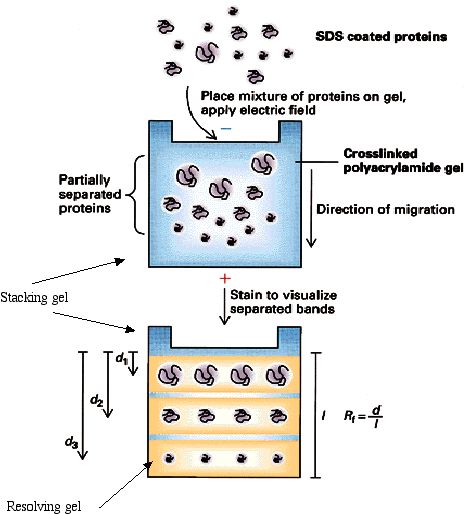Separating Protein with SDS-PAGE
6/3/2014
JoVE Science Education Database. Basic Methods in Cellular and Molecular Biology. Separating Protein with SDS-PAGE. Journal Visualized Experiments, Cambridge, MA, doi: 10.3791/5058 (2014).
Sodium Dodecyl Sulfate Poly-Acrylamide Gel Electrophoresis , or SDS-PAGE, is a widely-used technique for separating mixtures of proteins based on their size and nothing else. SDS, an anionic detergent, is used to produce an even charge across the length of proteins that have been linearized. By first loading them into a gel made of polyacrylamide and then applying an electric field to the gel., SDS-coated proteins are then separated. The electric field acts as the driving force, drawing the SDS coated proteins towards the anode with larger proteins moving more slowly than small proteins. In order to identify proteins by size, protein standards of a known size are loaded along with samples and run under the same conditions.
This video presents an introduction to SDS-PAGE by first explaining the theory behind it and later demonstrating its step-by-step procedure. Various experimental parameters, such as the polyacrylamide concentration and voltage applied to the gel are discussed. Downstream staining methods like Coomassie and silver stains are introduced, and variations of the method, like 2D gel electrophoresis are presented.






